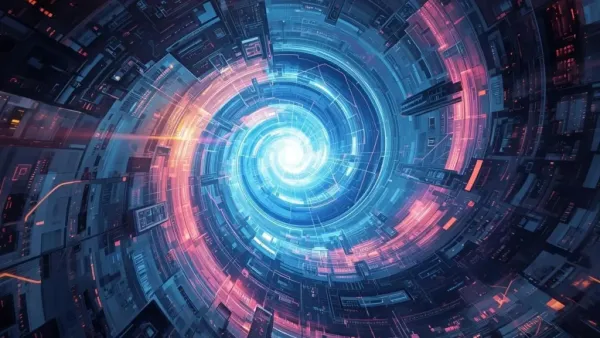
Few questions ignite human imagination like the idea of time travel — the ability to journey across centuries, to witness history unfold or glimpse the far future. It’s a concept that has inspired countless works of fiction, from H.G. Wells’ “The Time Machine” to Christopher Nolan’s “Interstellar.” But how much of it is science, and how much remains pure fantasy? We asked AI to break down what modern physics really says.
The science of time
Before asking if time travel is possible, it’s crucial to understand what time is. For centuries, humans treated time as an invisible, constant river flowing steadily forward. That changed in 1905 when Albert Einstein published his theory of relativity. He revealed that time and space are woven together into a single fabric — spacetime — and that the flow of time depends on an object’s speed and gravity.
In Einstein’s world, clocks tick differently for different observers. Move fast enough, or get close enough to a massive object like a black hole, and time itself slows down relative to the rest of the universe. This isn’t science fiction — it’s measurable physics.
Time travel to the future — already real
If you define “time travel” as moving through time at a different rate than others, then it already happens. Astronauts aboard the International Space Station orbit Earth at roughly 28,000 km per hour, experiencing time dilation — their onboard clocks run slightly slower than clocks on Earth. When they return, they’ve technically aged a few milliseconds less than the rest of us.
This same principle means that if someone could travel at speeds close to light, they could leap forward in time. For instance, a year-long voyage at near-light speed could result in decades or even centuries passing back on Earth. It’s a form of time travel that physics fully supports — though our technology can’t yet achieve such speeds.
Time travel to the past — where things get strange
Traveling backward in time, however, is where science runs into paradoxes. The most famous is the grandfather paradox: if you went back and prevented your grandparents from meeting, you’d never be born — so how could you have gone back in the first place?
Physicists have explored exotic scenarios that might make backward travel possible. Wormholes, for example, are theoretical tunnels through spacetime that could connect two distant points — and, if one end experiences time differently, could allow movement between past and future. Similarly, solutions to Einstein’s equations known as closed timelike curves suggest loops in time might exist under extreme cosmic conditions, such as near rotating black holes.
But these ideas face monumental challenges. To stabilize a wormhole, you’d need “exotic matter” — a substance with negative energy density. Such material has never been observed, though quantum physics hints it might exist in microscopic amounts.
Why the universe might forbid it
Even if the math allows it, many scientists suspect the universe enforces a kind of “chronology protection law”, as proposed by the late Stephen Hawking. In simple terms: the laws of physics may prevent paradoxes by making time loops inherently unstable. Any attempt to build a working time machine might collapse before it can function.
Quantum mechanics adds another layer of mystery. Some interpretations — like the many-worlds theory — suggest that changing the past could simply create a new branch of reality, leaving the original timeline untouched. If that’s true, time travel wouldn’t rewrite history — it would just create another universe.
What AI says about the future of time travel
Artificial intelligence, when asked to weigh current evidence, points to one clear conclusion: time travel to the future is already proven, though minimal; time travel to the past remains speculative. Yet physics continues to evolve. The more we learn about quantum gravity, dark energy, and spacetime itself, the more the impossible begins to look… possible.
AI suggests that breakthroughs in quantum computing, high-energy particle research, or black hole observation could one day reveal new dimensions of time. But even then, the enormous energy and stability required to manipulate spacetime might place true time travel forever beyond our reach — or at least far beyond human lifetimes.
The final verdict
For now, time remains a one-way journey — steady, irreversible, and endlessly mysterious. Still, every scientific advance brings us closer to understanding its true nature. And while stepping into a time machine might never leave the pages of fiction, the dream itself continues to drive the science that defines our universe.
After all, as Einstein himself once said, “The distinction between past, present, and future is only a stubbornly persistent illusion.”
-
LG Manoj Sinha said at Ghazipur Literature Festival – “Ghazipur is my world!”

-
To relieve stress you should drink these beverages:

-
Male actors in Pakistan also getting lip botox, says Ayaz Samoo

-
If you don’t like brinjal curry then make ‘Brinjal Katri with Curd’, this dish will be prepared instantly.

-
Simple Trick Can Help You Unlock Childhood Memories That You Thought Were Lost Forever
